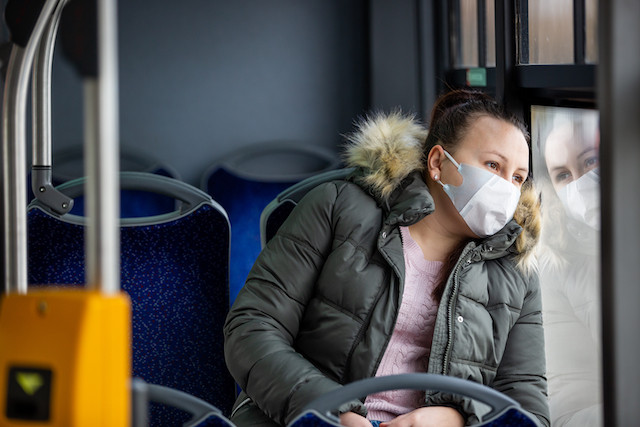The move, announced on Wednesday, one month after the start of confinment in Luxembourg, is a big departure from Luxembourg’s initial stance, which was to follow the World Health Organization recommendations.
These said that if you are not a frontline healthcare worker, people should only wear masks if they are ill with covid-19 or looking after someone who may have covid-19. Even then, they should not be considered a complete defence against the spread and should be worn and removed appropriately to avoid spreading the virus. The global shortage of personal protective equipment and need for frontline healthcare workers appears to be part of the reason behind this approach.
So, what changed?
Increasingly, members of the public started wearing masks in Luxembourg. Some communes even distributed them to over 65s, MP Marc Hansen pointed out in a recent parliamentary question. Responding on Tuesday, Lenert said that this communal action had been decided without consulting the health ministry. Three days later, the government took the decision to make them compulsory for people on public transport, in shops and any place where they are likely to come within two metres of someone not from their household.
This decision was reached as part of discussions on a gradual deconfinement, allowing certain sectors, such as construction, to resume activity on 20 April. At the same time, country figures on new infections and discharged patients showed that Luxembourg had emerged from the "first wave".
Another factor may be the emerging evidence that shows people are infectious very early after becoming unwell and even before they show symptoms. Meanwhile, some studies suggest the efficacy of some face masks in preventing transmission from asymptomatic individuals.

A pile of linen face masks made by TNL seamstress Denise Schuman. Photo: TNL/Facebook
How do I get a mask?
On Wednesday, the government announced it had a stock of 7 million masks, and starter packs would be sent out to each resident and every person working in Luxembourg. Surgical masks can be purchased at some pharmacies, although many have reported running out, according to a report from our sister publication Paperjam.
Prime minister Xavier Bettel also said a makeshift mouth and nose covering would also be acceptable. He suggested where there was no alternative, people should use a scarf or neck tube, for instance.
On 8 April, the health ministry issued guidelines saying that “alternative masks”, home-made or otherwise, could be worn by people feeling ill, people wishing to contribute to the common effort of stopping the virus and people for whom social distancing is challenging.
Weeks before then, it had made an appeal for volunteer sewers to make masks. A number of bodies including clothing brand Bram and the Théâtre Nationale de Luxembourg’s tailoring workshop (TNL) responded. TNL seamstress Denise Schuman is among them. She produced 500 masks from her mother’s heirloom linen, of which 200 went to friends and the remainder to the Scout’s “yellow box” appeal. “The masks in the box will be distributed by the ministry of health, but it is still not known where they will go exactly,” Schuman said.
The US Centers for Disease Control and Prevention issued the following guidelines on how to make and sterilise an alternative fabric mask using materials found in the home here. WHO issued the following guidelines on how to correctly wear and remove a mask avoid contamination.
The disclaimer
Wearing of alternative masks is not a magic bullet and must be used carefully in conjunction with other measures such as handwashing. Lenert said when she responded to Hansen’s parliamentary question: “It can pose a greater risk of spread if a mask is not handled correctly.”
Research suggests that while masks might help prevent people with covid-19 from unknowingly contaminating others, evidence for their efficacy is limited.
What are the different kinds of masks?
N95: when fitted properly and sealed close to the face, they filter out 95% of particles 0.3 microns or later. They are not recommended for general use because of their scarcity and because they are difficult to fit correctly.
Surgical masks: include non-woven polypropylene layers, which are moisture resistant. They offer less protection than N95s because air can flow in around the sides.
Fabric masks: they lack moisture-repelling layers and allow air in around the sides.
In which other countries are masks mandatory?
Yesterday, New York was the latest city to order its citizens to wear face coverings when entering essential businesses. A similar statement also came on Wednesday from Germany’s chancellor, Angela Merkel, and in Singapore.
Austria was among the first countries to make the wearing of basic masks in shops after introducing the measure on 6 April. Slovakia and Czech Republic, meanwhile, make their use compulsory every time a person leaves their home. Some Italian regions, including severely hit Lombardy, have made the wearing of face masks compulsory.
